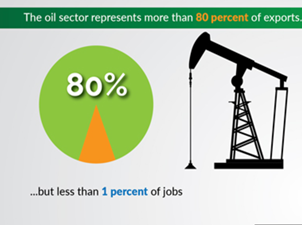(General Studies II – Polity section – Structure, Organization and Functioning of the Executive and the Judiciary—Ministries and Departments of the Government; Pressure Groups and Formal/Informal Associations and their Role in the Polity.)
- The suspension of two Kerala IAS officers, N. Prashant and K. Gopalakrishnan, for alleged violations of the All-India Services (Conduct) Rules, 1968, has raised pertinent questions about the conduct of civil servants, the adequacy of existing service rules, and the use of social media by officers.
- These cases highlight the need for a review of the rules to ensure clarity and fairness.
The Charges Against Officers –
- Against N. Prashant:
- Accused of making derogatory statements on social media against a senior IAS officer, allegedly undermining the public image of the State’s administrative machinery.
- Claimed that baseless news reports were orchestrated against him.
- Against K. Gopalakrishnan:
- Accused of creating a religion-based WhatsApp group, ‘Mallu Hindu Officers,’ which was alleged to promote communal disunity among IAS officers.
- Claimed his phone was hacked but failed to provide credible evidence and had reset the phone before investigation.
Relevant Rules Under AIS Conduct Rules, 1968 –
- Code of Conduct: Uphold constitutional values, maintain ethics, integrity, and political neutrality.
- Officers must not adversely criticize government policies in public media.
- Social Media Usage: Officers are allowed to participate in public media only for the bonafide discharge of duties. Criticism or actions that undermine the government’s policies are prohibited.
- Ambiguity in Conduct: Officers must avoid conduct that is ‘unbecoming of a member of the service’, a term open to subjective interpretation.
Issues Highlighted –
- Lack of Specific Social Media Guidelines: The rules do not explicitly define acceptable use of social media, creating ambiguity in what constitutes a violation.
- Officers are unclear about their rights to defend themselves against defamatory allegations online.
- Broad Interpretation of ‘Unbecoming of an Officer’: The omnibus clause is vague and prone to misuse or misinterpretation.
- Enforcement often reflects hierarchical biases, leaving junior officers vulnerable to arbitrary action.
- Blurred Lines Between Personal and Official Life: Increasing use of social media blurs boundaries, making it difficult for officers to separate personal opinions from official responsibilities.
- Lack of Safeguards Against Misuse: Senior officials and governments have disproportionate power in enforcing these rules, necessitating protections for junior officers.
| Code of Ethics A Code of Ethics outlines the core principles of integrity, accountability, transparency, and impartiality, guiding civil servants in ethical decision-making and upholding public trust.The Second Administrative Reforms Commission (ARC) recommended replacing the Conduct Rules, 1968, with a comprehensive Code of Ethics, emphasizing values like neutrality, empathy, and transparency.ARC proposed ethics training, the establishment of ethics committees, and regular ethics audits to ensure compliance and foster a culture of ethical governance.Countries like the United Kingdom, United States, Australia, and Canada have implemented ethical frameworks for civil services, integrating principles of integrity and service accountability.The Civil Service Code in the U.K. focuses on honesty and objectivity, while the Ethics in Government Act in the U.S. emphasizes preventing conflicts of interest.A Code of Ethics fosters public trust, promotes accountability, and provides a framework for addressing ethical dilemmas in governance and public service.Ethical frameworks prevent corruption, ensure responsible decision-making, and enhance the professionalism and credibility of civil servants |
Recommendations for Review and Reform –
- Explicit Social Media Guidelines: Define acceptable and prohibited content for social media, covering both official and personal contexts.
- Include provisions allowing officers to respond to defamatory campaigns concerning their official duties.
- Clarification of ‘Unbecoming of an Officer’: Develop an illustrative list of behaviors deemed unbecoming based on past cases.
- Limit the scope for subjective interpretation to ensure consistency and fairness.
- Training on Responsible Social Media Use: Conduct mandatory workshops for officers, particularly younger ones, on balancing anonymity and effective use of social media to disseminate government initiatives responsibly.
- Mechanism for Redressal: Introduce an impartial mechanism for officers to contest disciplinary actions related to social media and conduct rules.
- Promoting Anonymity: Reinforce the importance of anonymity in official communications to uphold the integrity and impartiality of civil services.
- Strengthening Rule Enforcement: Ensure that disciplinary actions are transparent, non-discriminatory, and free from political or hierarchical bias.
| The Kerala IAS officers’ suspension brings to light the inadequacies in current conduct rules, particularly regarding social media usage and ambiguous clauses like “unbecoming of an officer.” A thorough review of these rules is essential to balance discipline, transparency, and fairness, while enabling officers to function effectively in an increasingly digital world. This will protect the integrity of the civil services and promote public trust in governance. |





